O’Sullivan: The early specialization dilemma in North American soccer
 We have a huge problem in American soccer.
We have a huge problem in American soccer.
Currently soccer is the most popular introductory sport in our country, with 20 percent of American 6-year-olds playing. So what’s the problem?
The problem is that as soon as we sign them up, we start losing them! According to research conducted for the Aspen Institute’s Project Play Initiative, we lose 30 percent of those kids by age 12! Overall soccer numbers among 6- to 12-year-old kids are dwindling, from 5.6 million in 2008 to 5.0 million in 2013. Our current system costs us millions of players between the ages of 6 and 17.
That is a big problem, and at its root is a push for early specialization, with its year-round commitments, higher fees, and an over-organized, competition-focused youth soccer environment. Throw in a lack of support and coaching education for the coaches at the point of first contact with the game – usually volunteer moms and dads with great passion, but little experience – and the result is that we have stolen the game from our kids.
So they quit.
Now I realize this is a bold statement, but stay with me here.
Every time I am in a conversation about early specialization in soccer, the following statement is made in some form or another: “Everywhere else in the world they only play soccer; it worked for Messi, Ronaldo and Neymar, so don’t tell me it is bad for my kid.”
Sadly, that statement is used as validation to ignore boatloads of scientific, psychological and medical advice when it comes to raising young athletes. That advice says specializing in a team sport, even soccer, prior to puberty can cause a litany of issues and is no more likely to guarantee future success then specializing later. The evidence is pretty conclusive.
+READ: LeBolt: What’s so wrong with early specialization?
So why do we think specialization is bad here, compared to Europe and South America, where seemingly everyone “specializes?” I believe it is a case of mistaken identity.
When we compare the U.S. model with other countries that are producing the type of players we envy, we are confusing early sport-specific specialization with early sport engagement. The subtle difference between the two is not simply semantics. In fact, it can change the course of your child’s sporting life, and is worthy of an in depth discussion.
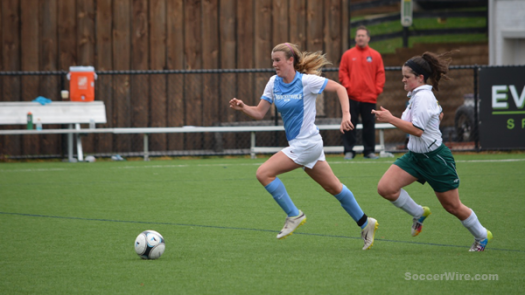 When I say “early specialization in soccer,” I would define this as the participation in soccer, and only soccer, at an age prior to puberty, in a practice-focused, highly-organized, adult-led environment. I am talking specifically about a hypothetical 8-year-old who only plays and practices soccer in an organized environment, because that is all he likes/has time for/is able to commit to. This has become quite common, sadly, and it’s not healthy.
When I say “early specialization in soccer,” I would define this as the participation in soccer, and only soccer, at an age prior to puberty, in a practice-focused, highly-organized, adult-led environment. I am talking specifically about a hypothetical 8-year-old who only plays and practices soccer in an organized environment, because that is all he likes/has time for/is able to commit to. This has become quite common, sadly, and it’s not healthy.
Early engagement, on the other hand, is a player-centric, free-play oriented introduction to a sport. Be it street soccer, beach soccer or pickup games in the park, it is play in a variety of child-led games on different surfaces, with different restrictions. It combines large doses of free play with smaller doses of organized instruction. It is centered on the enjoyment of the game, rather than deliberate practice in pursuit of a long-term goal. It increases intrinsic motivation and ownership of the experience. It is what we might see more often in American basketball in city parks, and as I have written about here, the research on the tremendous value of play cannot be overstated.
The Messis, Ronaldos, and Neymars of the world were early sport engagers, not specialists. They played whenever they could. They played wherever they could. They were exposed to a variety of both unorganized and organized structures. Do you think they were thrown into a practice-only environment when they were 7 and drilled to be technical geniuses? No.
As Neymar’s futsal coach so aptly stated: “My role was to give him freedom, not block his talent and try to improve his technical abilities. I didn’t need to teach him how to dribble…”
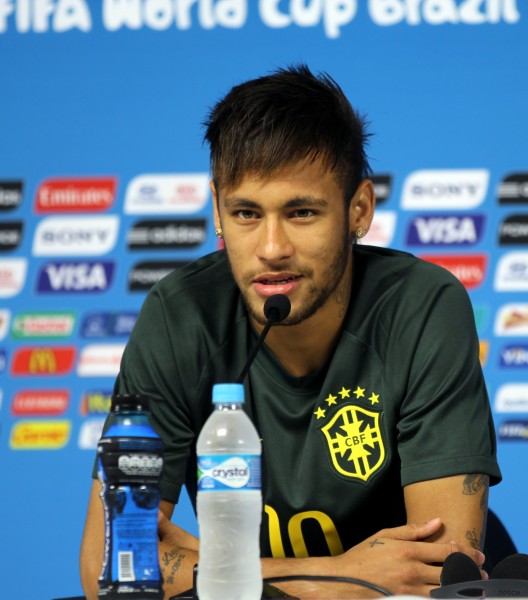 Even Neymar himself said, “I used to pick up the ball, set up the furniture and go around dribbling anything that popped in front of me. I felt complete with the ball at my feet; there is no other way to describe it…I loved to play.”
Even Neymar himself said, “I used to pick up the ball, set up the furniture and go around dribbling anything that popped in front of me. I felt complete with the ball at my feet; there is no other way to describe it…I loved to play.”
The world’s elite soccer players come from early engagement environments far more often than early specialization ones.
But sadly, here in the U.S., we tend to devalue play, and overvalue adult-led practice, so much so that my friend Mark O’Sullivan says “even the kids are starting to believe play has no worth.”
Far too many parents and coaches think straight lines and lots of cones are the key to a good practice, while sport scientists and skill acquisition experts tell us that randomized chaos is actually more effective for learning. Far too many “paying customers” don’t want games based activities with freedom to fail; they wan’t joy-sticked players and controlling coaches fixing every problem in pursuit of a win.
They want specialization, and not engagement, becasue they believe that is the path to long-term success.
+READ: Our Biggest Mistake: Talent selection instead of talent identification
Now before anyone goes jumping for joy here, saying, “my kid is not a specialist but an early engager, so I am in the clear,” we must realize that early engagement can have many of the same physical issues as early specialization does. In this article by Dan Coyle, author of The Talent Code, he presents evidence that children who specialize at a young age are:
- Twice as likely to get injured, many of these issues resulting from overuse
- Less likely to participate in sports as adults
- Are less coordinated and physically fit.
Simply because elite players come out of other countries at a good clip does NOT mean that the research-identified pitfalls of early specialization do not exist there. They do, they are rampant, and those who choose to play only one sport from a very young age are gambling that the very small chance of a payoff (professional-level play) happens before they get injured or quit. It is not as though throughout the world no one gets hurt, no one burns out, and no one has any long-lasting psychological issues if their soccer dream does not materialize.
So in a nutshell, whether you follow the early engagement or early specialization path, there is an increased risk of physical and psychological issues.
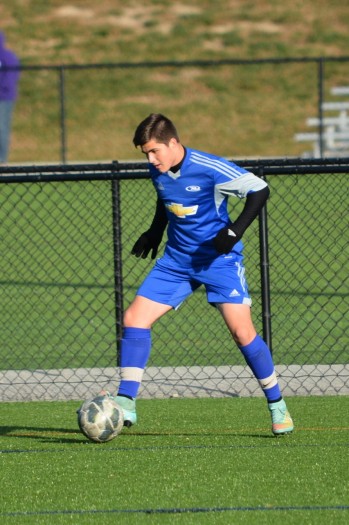 Yet soccer is an early introduction sport, meaning that for a player to have aspirations of playing at a high level he or she must begin prior to puberty. We often speak of the “Golden Age of Skill Development” in soccer, that period from age 8-12 where kids are most sensitive to developing the technical skills and movements needed to play at a higher level.
Yet soccer is an early introduction sport, meaning that for a player to have aspirations of playing at a high level he or she must begin prior to puberty. We often speak of the “Golden Age of Skill Development” in soccer, that period from age 8-12 where kids are most sensitive to developing the technical skills and movements needed to play at a higher level.
If your child wants to play high-level soccer later in life, he or she must engage with the game early on, and develop technically prior to their growth spurt during puberty. That is without question.
So how do we balance the perils of specialization with the fact that great soccer players need to start early and play a lot?
This is where multi-sport participation prior to age 12 comes into play. Developing an athletic foundation helps to prevent many of these physical issues, as well as the burnout and dropout caused by focus on one sport so young.
What I am hearing from coaches throughout the world is that kids are not as “naturally” athletic as they used to be. Years ago, children developed all around athleticism through PE class in schools, ample free play, and in some countries, multi-sport participation. Today, PE programs are being cut for more class time, free play is virtually non-existent in many places, and kids are being forced to specialize far too young. It is a dangerous combination, and it shortcuts the early engagement and multi-sport phase that so many top players credit for their foundation and love of the game. And it is not just an American problem.
+READ: O’Sullivan: The missing ingredient in North American soccer talent development
Even at Manchester United, according to sport performance coach Tony Strudwick, the overall athleticism, body control and gymnastic movement ability that used to come from street soccer and free play is not as prevalent. This athleticism now has to be developed. To do so, as Strudwick directly stated at the recently completed NSCAA Convention in Philadelphia, “U-12 and younger players should engage in multi-sport participation.”
Wait a second. This is a PhD in sport science in charge of elite player development at Manchester United, the club that is in the top two in the world for producing professional players, saying what? Play multiple sports? Did I hear that right?
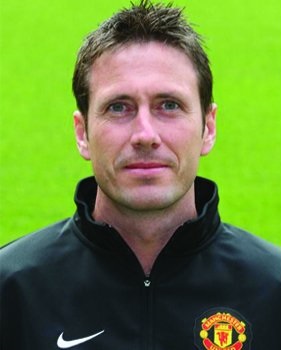 You did. He is NOT saying play only three months of soccer and you will be great. He is also NOT saying play two or three sports 5 days a week during the same season. What he is saying is you do not need to play soccer all 12 months, and playing other sports while taking breaks from soccer (and players should have time off) is a good thing both physically and psychologically.
You did. He is NOT saying play only three months of soccer and you will be great. He is also NOT saying play two or three sports 5 days a week during the same season. What he is saying is you do not need to play soccer all 12 months, and playing other sports while taking breaks from soccer (and players should have time off) is a good thing both physically and psychologically.
The reason that Strudwick and others like him are calling for more overall athletic development at the youngest ages is that the demands of the modern game require a far greater degree of athleticism then the game used to. Players train more, play more, travel more, and in the modern counter attacking game, are required to cover huge distances at top speed at critical moments.
Those who are not athletic enough cannot meet the training or playing demands, and get injured too often to fully develop. Playing other sports helps to develop the athleticism needed to sustain the rigors of modern soccer.
But this is not the only reason specialization is bad for your child, and bad for the game in North America.
Here we have even more compelling reasons to get away from the early specialization environment than our world competition does. Let’s explore a few of the other differences between the environment facing a young American player and his or her counterparts throughout the world.
Because in reality, we are comparing apples and oranges.
The American Player Development Model vs. the World
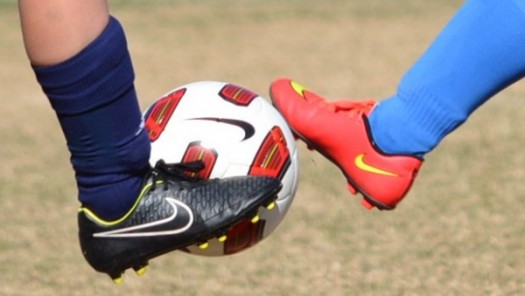 Culture
Culture
In the US, soccer is one of many sports that kids have access to. Soccer is one of many sport choices, so we need a model that fosters not only early involvement but continued participation, and forcing kids to specialize in costly soccer programs does not do that. Also, due to our relative affluence, the physical and emotional costs to attain elite status outweigh the benefits for many players. They actually have a lot to lose by going all in, as they can make a better living in other sports, or outside of sport.
Throughout the world, in most countries there are far fewer choices when it comes to sports. The best athletes will naturally gravitate to soccer, and do not necessarily have or want a fall-back sport. There will be more opportunities to play pick-up. The list goes on and on, but in short, they have far less to do to keep their best potential players interested in advancing in soccer, and many of those players have little to fall back on if they do not make it as a player. It is worth the risk to go all in.
Cost
Most soccer in the U.S. is pay to play. The better you are, the more you pay, at least up until age 12 or so when you might move into an MLS-sponsored academy program. Our system is set up to identify, train and promote only those who can afford to pay, not those who have the most potential to develop. By promoting early specialization, we indirectly promote increased competition at younger ages, tryouts, cuts, as well as increased costs. These barriers to entry are and will continue to be devastating to the growth and development of the game.
Throughout the world, soccer is free. Whether it is government funding to youth sports clubs, street soccer, or professional clubs funding their academies through the sale of players and professional level revenue, the only barrier to entry is your ability to play, and your ability to get seen. If you are good enough, you are in.
+READ: U.S. Soccer announces U-12 Development Academy expansion; will it matter?
The best players may make choices about moving and schooling, but the entire system is designed to identify and train the best players. The better ones move up the ladder to top clubs, while others can continue to develop at their local club, free of charge, and usually at their own pace.
Player Development Model
In the United States, as much as no one likes to admit it, we have a team-focused development model. Our obsession with winning continues to trickle down to younger and younger ages. There are now some states that have tryouts for 6-year-olds’ teams and U-9 state championships. Aside from increasing costs, when you have tryouts, tiered teams and state championships at U7-10, you turn away from individual player development and focus on the results and advancement of teams. The more you win, the more paying customers you attract. In essence, winning keeps the doors of the business open, and this places individual player development secondary to team success.
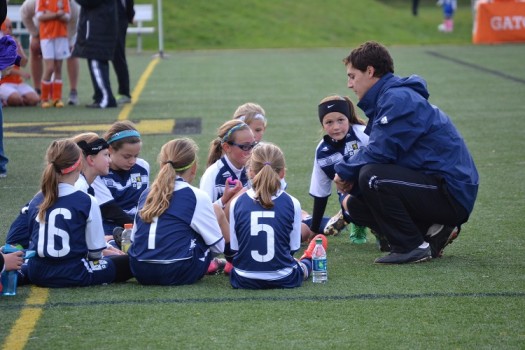 Throughout the world, clubs have a financial incentive to develop individual players. Lower-tier clubs fund their operations by selling promising young players to big clubs. Even elite-level clubs, while perhaps only promoting a few players to their own first team, sell dozens of players on to other clubs, which in turn funds their academy and even the purchase of first-team players. While a professional club may tout a cup-winning youth side, the development of individual players is what keeps or costs coaches their jobs and keeps the academy operation in the black.
Throughout the world, clubs have a financial incentive to develop individual players. Lower-tier clubs fund their operations by selling promising young players to big clubs. Even elite-level clubs, while perhaps only promoting a few players to their own first team, sell dozens of players on to other clubs, which in turn funds their academy and even the purchase of first-team players. While a professional club may tout a cup-winning youth side, the development of individual players is what keeps or costs coaches their jobs and keeps the academy operation in the black.
In summation, the current American model is team-centric, excludes players and diminishes our player base by placing financial and commitment burdens on our players and families at far too young an age. When you combine this with a lack of early engagement in the game, replaced by enforced specialization, you do not have a model that will develop elite world players.
Requiring soccer specialization prior to age 12 will not fix these differences. In fact, it will likely exacerbate them. But there is a way forward.
In Part II, I will lay out a simple plan that can create a culture of early sport engagement in the U.S. that will not only benefit individual players, but will contribute to the health of our clubs and the growth of the game in our country.
I think we all can get behind that concept in a general sense.
In the meantime, share your thoughts below.
SOCCERWIRE MARKETPLACE
- The St. James FC Travel Staff Coach - North (Loudoun) & South (Fairfax)
- The St. James FC Girls Academy (GA) Head Coach - 2 teams
- The St James FC Boys Travel Tryouts
- OFFICIAL BAYERN MUNICH SUMMER CAMPS U.S.
- JOIN THE ALLIANCE!
- OFFICIAL FC BARCELONA CAMPS U.S.
- The Cup San Diego - Hosted by Legends FC
- Players Wanted - Undergraduate or Post-graduate
- Head Coach - South Region at The St. James FC
- Travel Coach - North Region at The St. James FC

